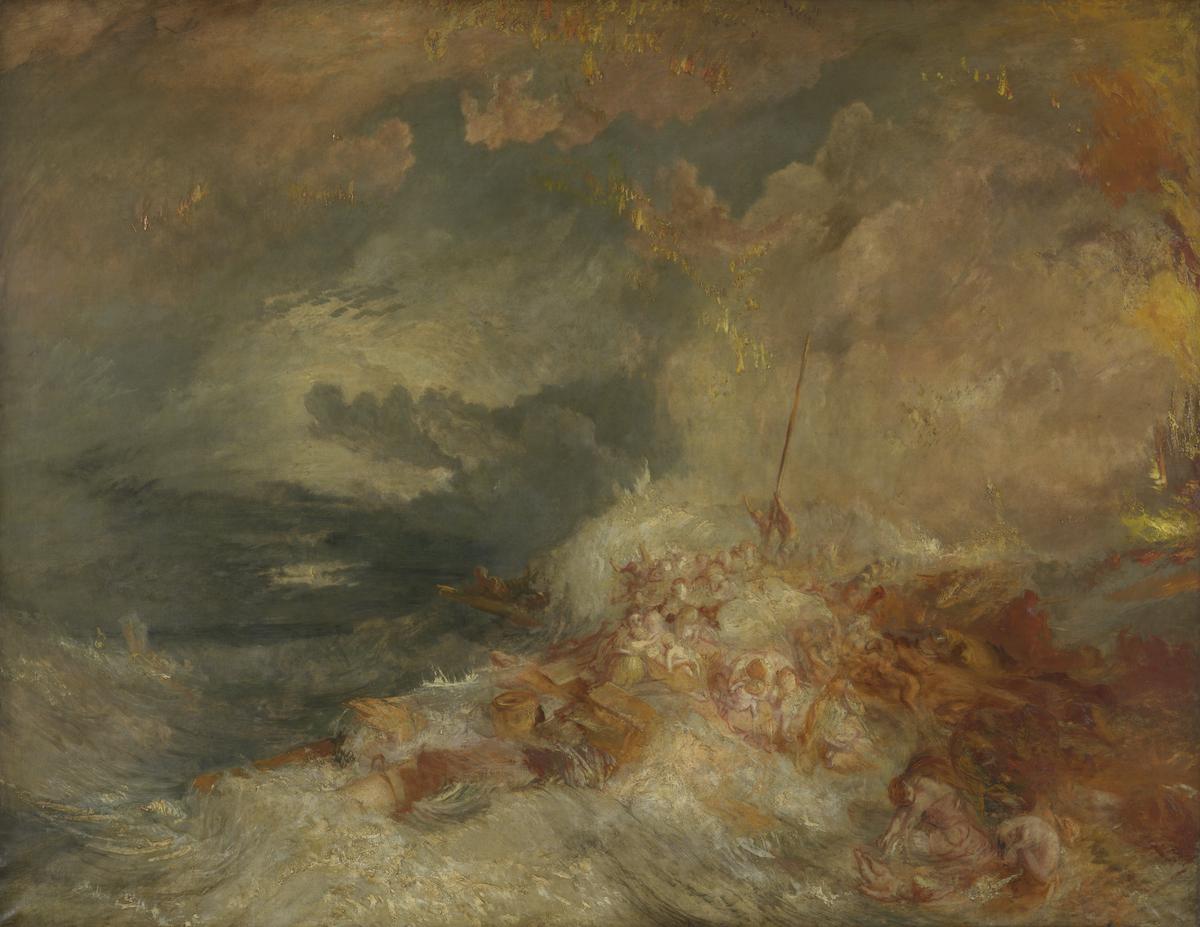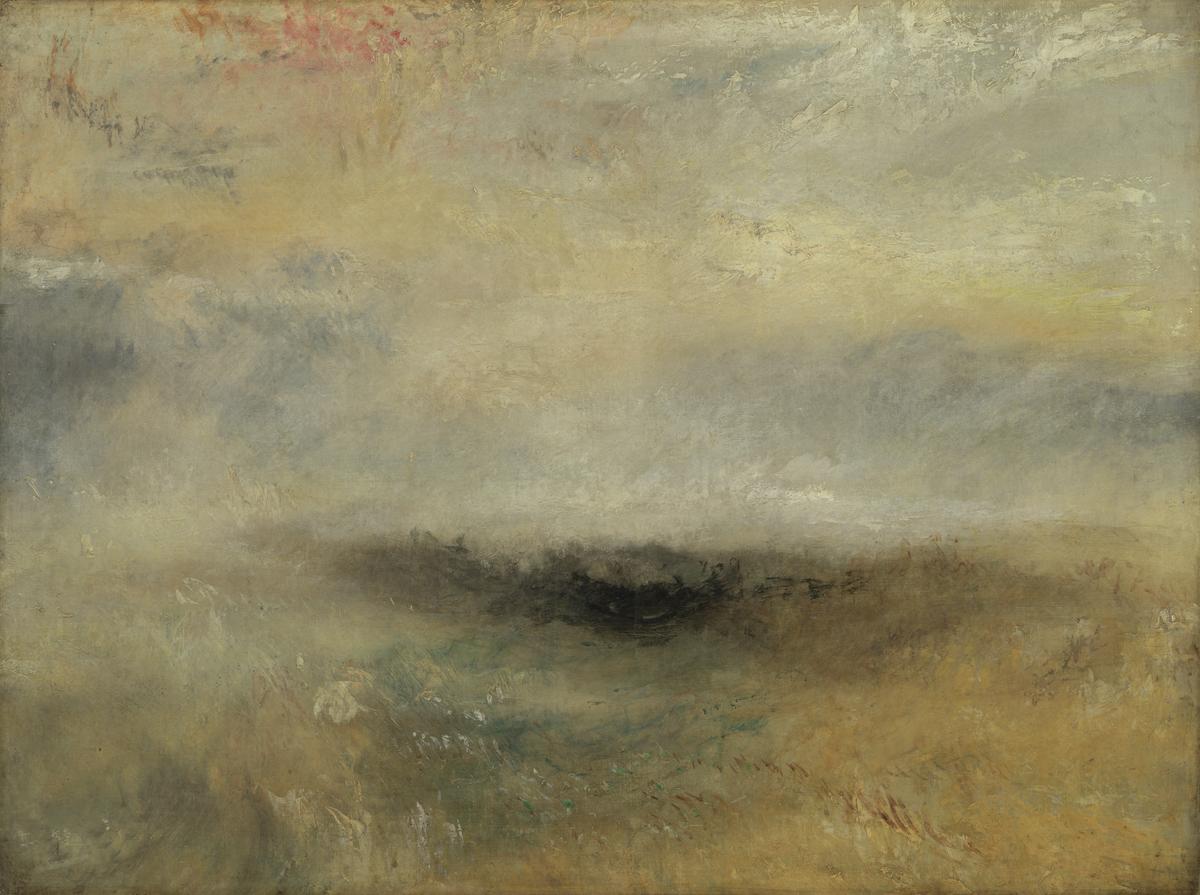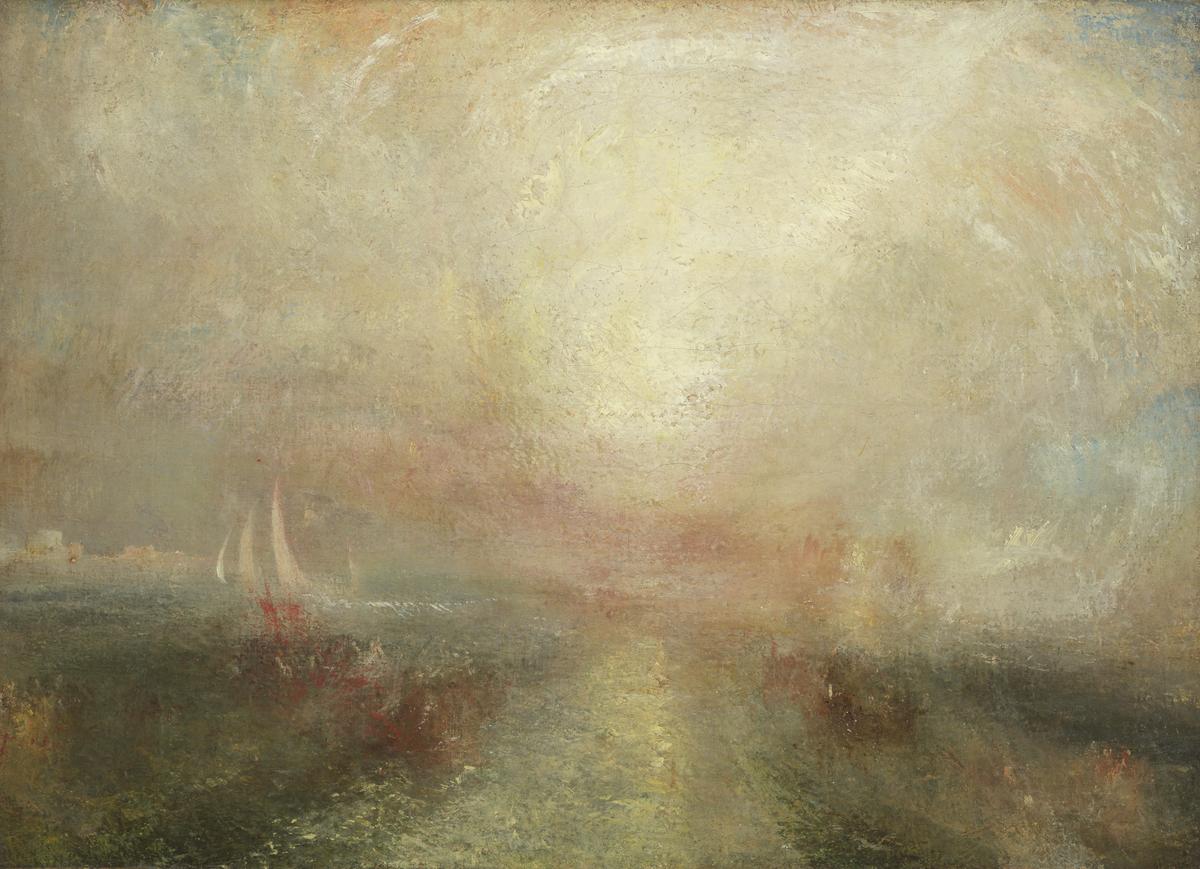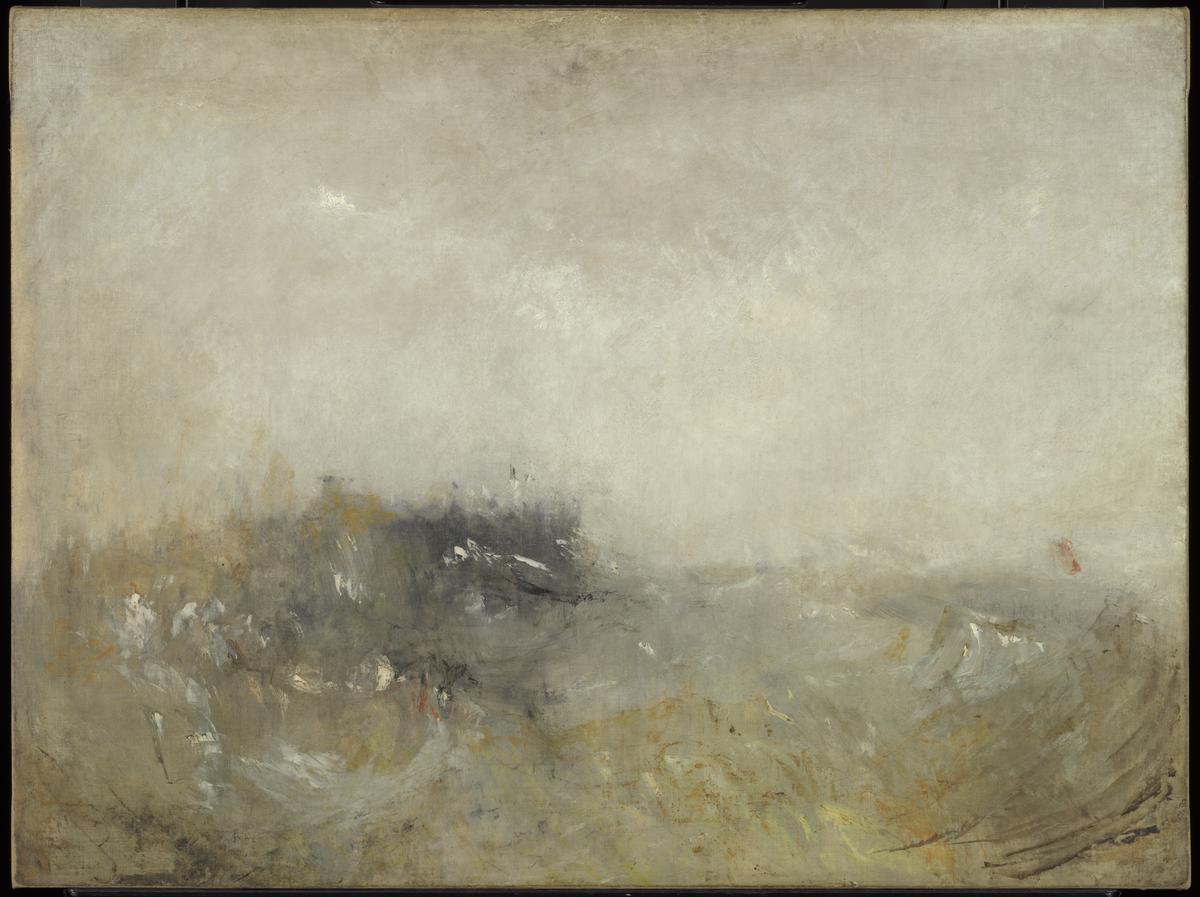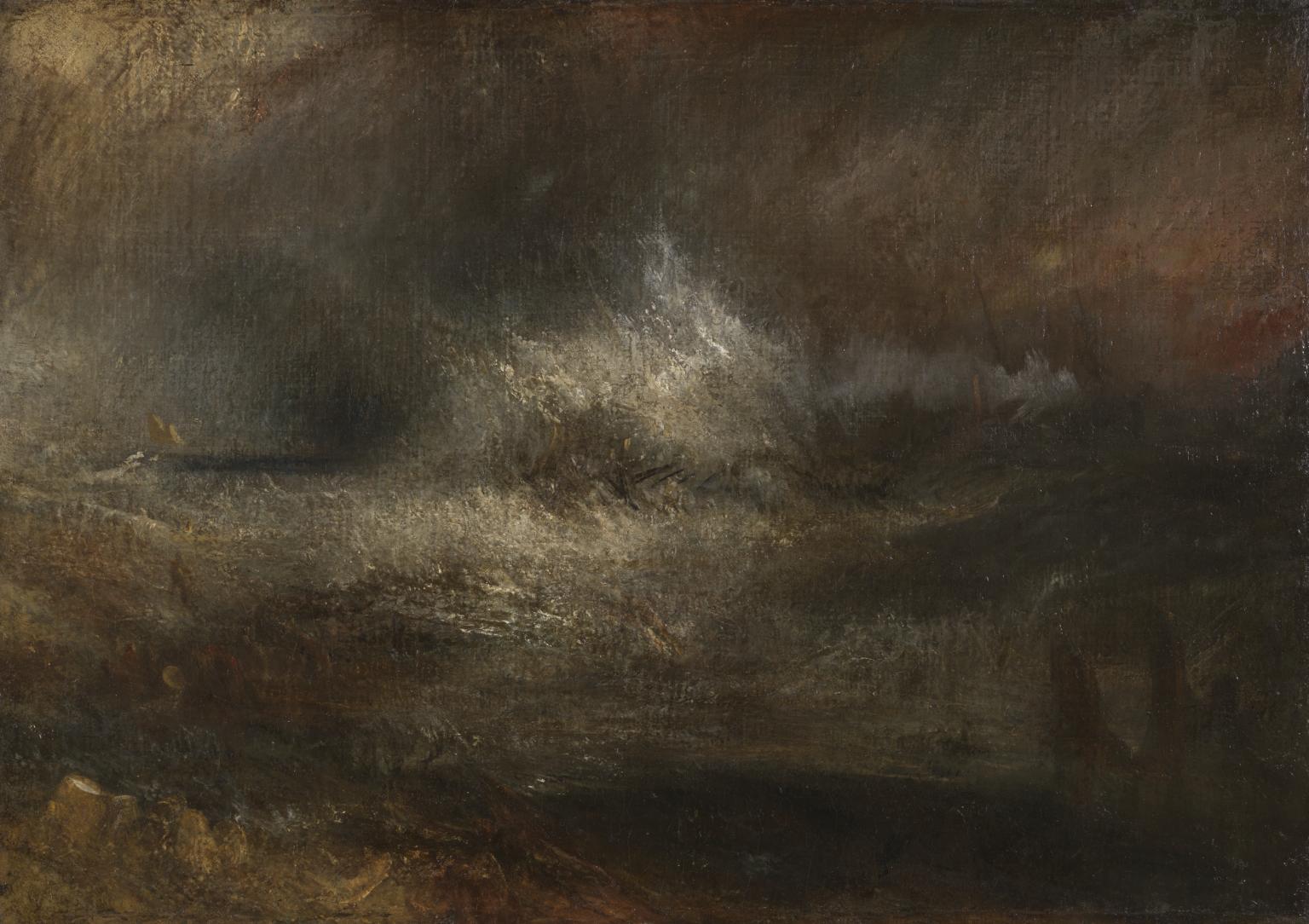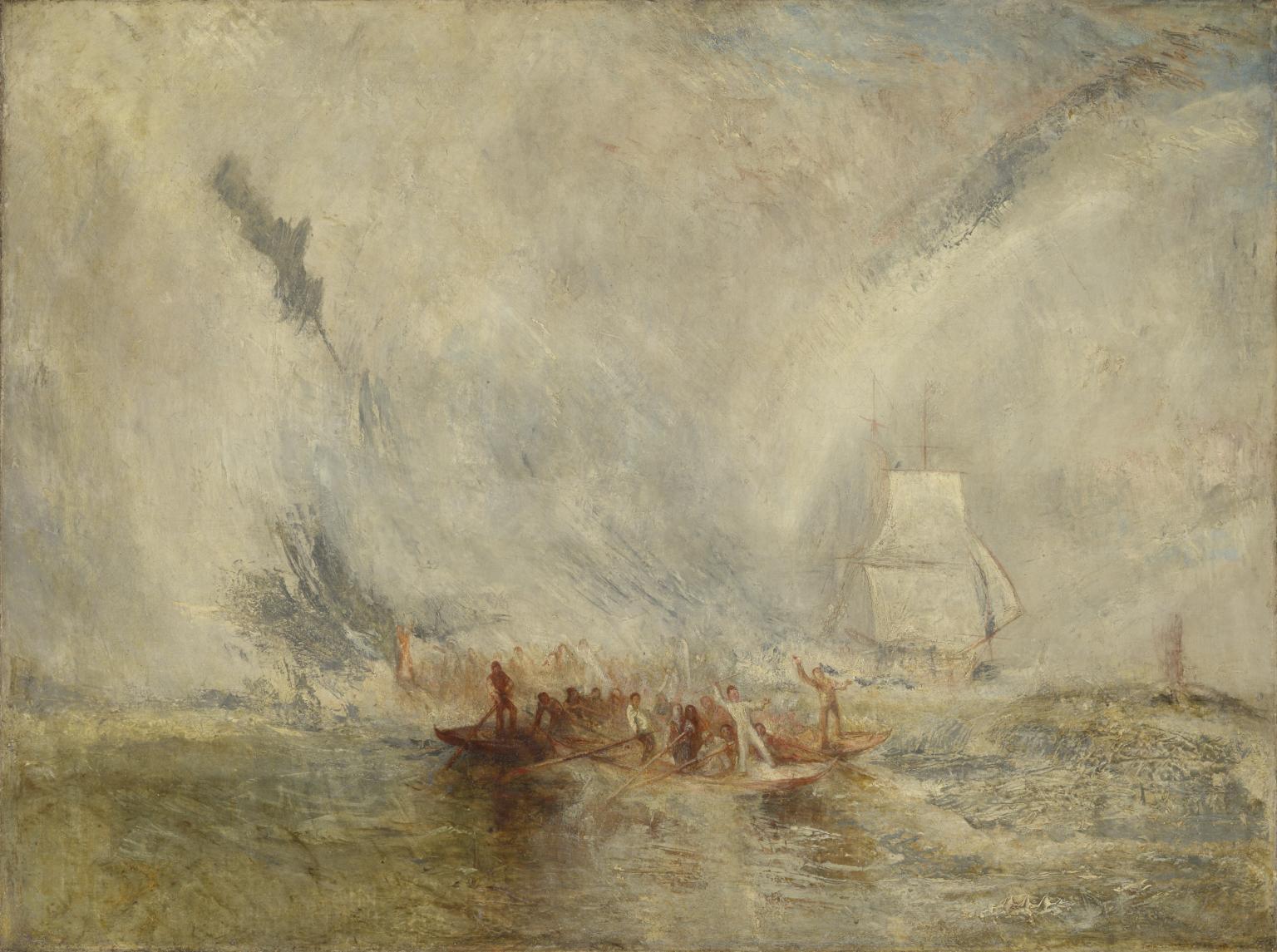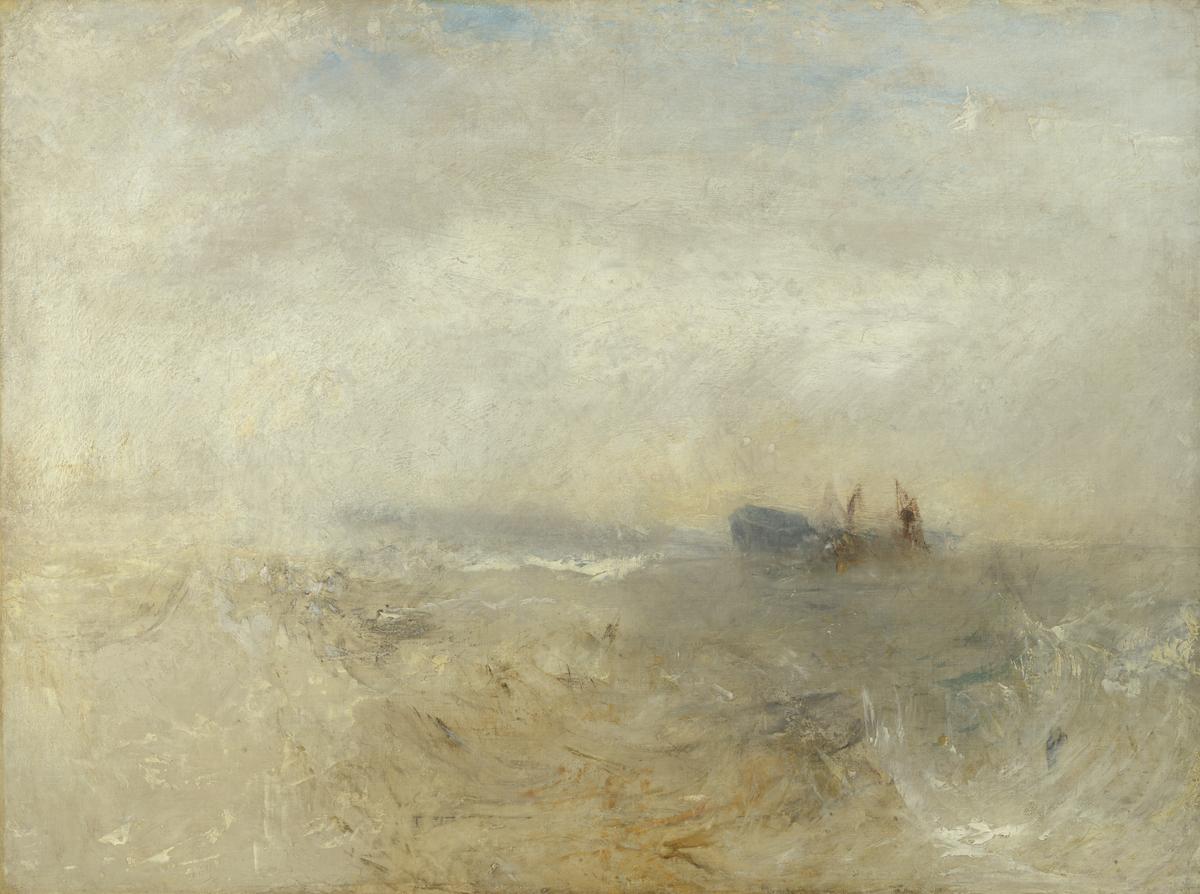Explore Turner's lifelong interest in depicting scenes of British landscape and contemporary life
At the beginning of his career, Turner went on a tour of Britain every summer. He recorded landscapes, coasts, towns and everyday scenes in his sketchbooks. These sketches became material for pictures, watercolours and prints. His work ranged from highly finished scenes full of human activity to spontaneous impressions of nature.
The early 19th century saw a series of wars between Britain and France. Apart from work produced during a brief ceasefire in 1802 when he visited Paris and the Alps, Turner concentrated on British subjects. He often showed these in groups at his gallery, combining naturalism with patriotic sentiment. After the peace of 1815, Turner regularly travelled abroad, so toured less in Britain. He did, however, spend working holidays at the houses of his closest patrons, such as Lord Egremont at Petworth House.
Britain progressed from a state of constant war towards Victorian prosperity. Turner depicted the technological advances and social changes happening around him. His work reflected the lives of working people and his wealthy and aristocratic patrons.
Art in this room
